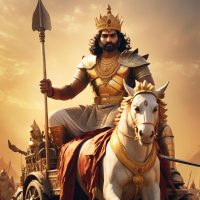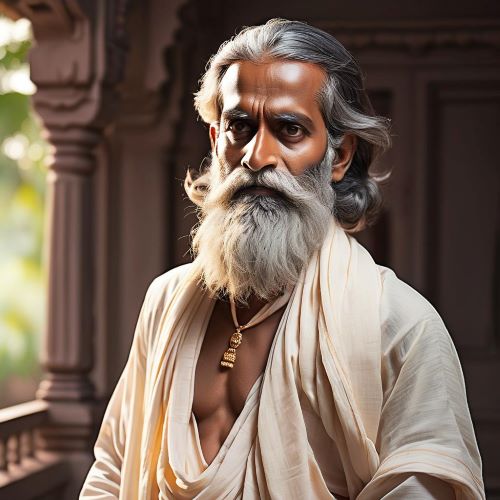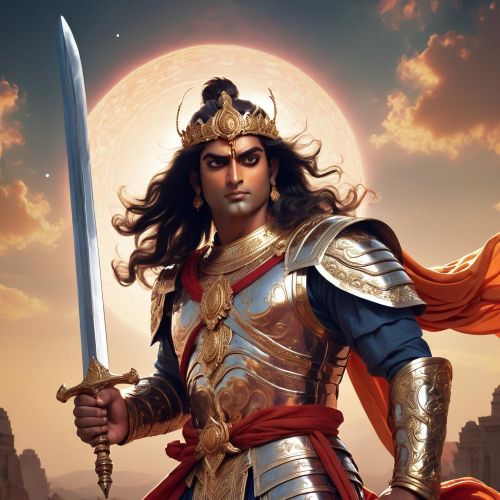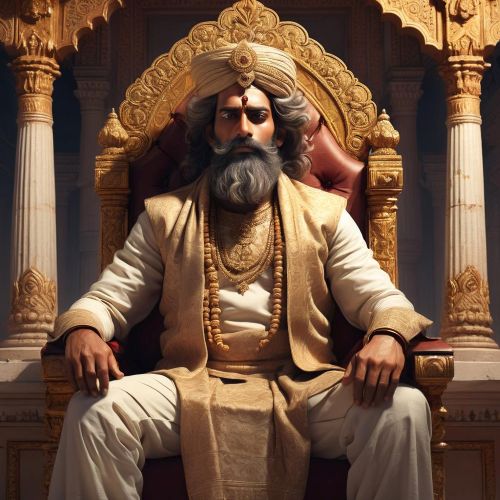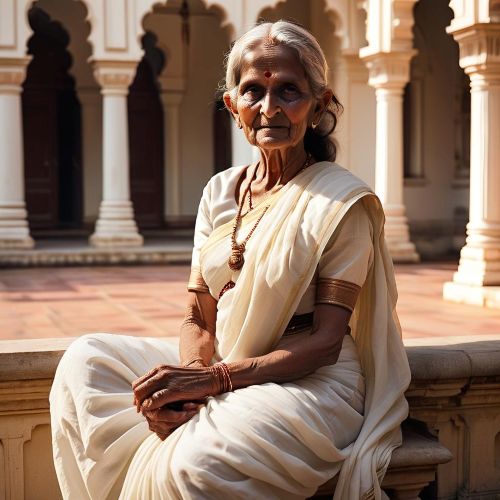Shalya : The Master Charioteer
Listen
At a glance
| Description | |
|---|---|
| Origin | Indian Mythology |
| Classification | Mortals |
| Family Members | Madri (Sister), Nakula, Sahadeva (Nephews_ |
| Region | India |
| Associated With | War |
Shalya
Introduction
Shalya, the valiant king of the Madra kingdom, is one of the most complex and fascinating figures in the Mahabharata, the great Sanskrit epic of ancient India. His story intertwines loyalty, deception, and moral conflict, making him a character of deep psychological and philosophical depth. As the brother of Madri, the wife of King Pandu, Shalya was the maternal uncle of the Pandavas. Although his affection for them was unwavering, fate and deceit led him to fight on the side of the Kauravas during the legendary Kurukshetra War. His dual role as both kin to the Pandavas and ally to their enemies highlights the eternal struggle between duty and emotion — a recurring theme in Indian mythology.
Shalya’s presence in the Mahabharata reflects the complexities of human relationships and the consequences of moral dilemmas. His story has also transcended its mythological roots, influencing Indian cultural, philosophical, and even medical traditions. The very word “Shalya” carries meanings of sharpness and precision, both qualities that define his character and his symbolic representation in the epic.
Physical Traits
Ancient texts portray Shalya as a warrior of striking grace and formidable strength. Despite his lean build, he possessed exceptional endurance and dexterity. Known for his mastery of the spear — a weapon also called shalya in Sanskrit — he embodied agility and skill rather than brute power. His strength was said to rival thousands of warriors combined, and his calm yet calculated movements made him a deadly opponent in battle.
Shalya was also celebrated for his expertise as a charioteer, considered second only to Krishna himself. His steady hand and keen perception allowed him to maneuver through the chaos of war with remarkable precision. Unlike many warriors who relied on fury or physical dominance, Shalya’s composure and control reflected his deep understanding of combat strategy and his disciplined mind. His regal bearing, sharp intellect, and refined demeanor marked him as not just a warrior-king but also a philosopher of warfare.
Family
Shalya hailed from the Bahlika or Madra lineage, ruling over the kingdom of Madra, located in the northwestern region of the Indian subcontinent — corresponding roughly to modern-day Punjab. His sister Madri married King Pandu of Hastinapura, making Shalya the maternal uncle of the Pandavas, particularly Nakula and Sahadeva, whom he cherished deeply.
After Madri’s death, Shalya invited the twins to Madra, intending to make them his heirs. Nakula and Sahadeva agreed on the condition that their loyalty to the Pandavas would remain absolute. This episode reveals Shalya’s deep affection for his nephews and his desire to preserve familial bonds even in times of turmoil.
Shalya’s own sons, Rukmaratha and Rukmangada, were valiant fighters who accompanied him to the Kurukshetra War. However, despite his family ties to the Pandavas, Shalya was tricked by Duryodhana into joining the Kaurava side. Duryodhana’s act of deceptive hospitality — hosting Shalya’s army with grandeur and generosity before the war — led the king to unknowingly pledge his allegiance to the Kauravas. Bound by his word and royal honor, Shalya chose to keep his promise, even though his heart favored his nephews.
Other names
In various retellings of the Mahabharata, Shalya is known by several titles and epithets that reflect his heritage, valor, and nobility. He is referred to as Madradhipa, meaning the “Lord of Madra,” and Madraraja, the “King of the Madras.” He is also called Balhika Pungava, denoting his descent from the ancient Bahlika lineage, and Artayani, referencing his family’s dynastic roots. Other designations such as Madraka, Sauvira, and Madrajanadhipa further highlight his regional and political significance.
Each of these names adds a layer to his identity, situating him within the broader fabric of the epic’s geopolitical world. They reflect his stature as a monarch, his martial heritage, and his role as a key bridge between different royal lineages of northern India.
Powers and Abilities
Shalya was celebrated for both his physical prowess and his psychological insight. His unique strength lay in his capacity to absorb a portion of his opponent’s power during combat, a gift that made him nearly invincible in battle. His mastery over divine weapons (astras) and his command of traditional arms like the spear and mace made him one of the most versatile warriors of his time.
Beyond combat, Shalya’s intelligence and eloquence defined his leadership. As Karna’s charioteer during the climactic stages of the war, he skillfully balanced his loyalty to Duryodhana with his underlying sympathy for the Pandavas. Yudhishthira had previously instructed Shalya to demoralize Karna through subtle praise of Arjuna’s superiority — a psychological tactic that Shalya executed with finesse. This episode showcases his sharp understanding of human nature and his ability to influence outcomes through words rather than weapons alone.
After Karna’s fall, Shalya was appointed the fourth and final commander-in-chief of the Kaurava army. His tenure was brief but intense, culminating in a fierce duel with Yudhishthira. Using a celestial weapon imbued with Shiva’s energy, Yudhishthira ultimately defeated Shalya, marking one of the final turning points of the great war.
Shalya’s combat expertise, tactical mind, and moral restraint make him an example of balanced power — a warrior who combined discipline with wisdom, and valor with self-control.
Modern Day Influence
The legacy of Shalya extends far beyond mythology. In the field of traditional Indian medicine, Shalya Tantra — one of the eight branches of Ayurveda — derives its name from the same Sanskrit root. It refers to the discipline of surgery and wound treatment, pioneered by Acharya Sushruta, often called the father of surgery. Techniques and principles from Shalya Tantra continue to influence modern surgical methods, blending ancient precision with scientific innovation.
In modern literature and media, Shalya’s story serves as a timeless reflection on the dilemmas of ethics, loyalty, and honor. His role is frequently examined in reinterpretations of the Mahabharata, where he symbolizes the tragedy of moral compromise — a man forced to act against his conscience in the name of duty. Contemporary writers and scholars explore his character to understand leadership psychology, emotional intelligence, and the subtle dynamics of dharma in decision-making.
Digital storytelling, podcasts, and modern screen adaptations of the Mahabharata have reintroduced Shalya to new generations. He is often portrayed as a man of grace, intellect, and conflicted emotion — a warrior torn between righteousness and obligation. His story resonates with audiences navigating similar tensions in modern life: between personal integrity and societal expectations.
Related Images
Source
Wikipedia. (n.d.). Shalya. Retrieved October 8, 2025, from https://en.wikipedia.org/wiki/Shalya
Temple Purohit. (n.d.). Shalya Parva in Mahabharata. Retrieved October 8, 2025, from https://www.templepurohit.com/shalya-parva-mahabharata/
The Indian Dharma. (2024, October 1). Episode #1167 – The all-important “Shalya Parva”. https://theindiandharma.org/2024/10/01/episode-1167-the-all-important-shalya-parva-an-overview/
Apam-Napat. (2025, May 4). Salya – Brother of Madri | Insights, Stories & Legends. https://apam-napat.com/entities-salya/
Wisdomlib.org. (2025, July 17). Shalya: Significance and symbolism. https://www.wisdomlib.org/concept/shalya
The International Journal of Creative Research Thoughts. (2025). Integration Of Ayurvedic Shalya Techniques In Modern Medicine. https://www.ijcrt.org/papers/IJCRT25A6237.pdf
Vyasa Online Encyclopedia. (2016, August 31). Shalya. https://www.vyasaonline.com/encyclopedia/shalya/
Debroy, B. (2010). The Mahabharata, Vol. 1–10. Penguin Books.
Hiltebeitel, A. (2001). Rethinking the Mahabharata: A Reader’s Guide to the Education of the Dharma King. University of Chicago Press.
Narayan, R. K. (1978). The Mahabharata: A Shortened Modern Prose Version. University of Chicago Press.
Doniger, W. (2009). The Hindus: An Alternative History. Penguin Books.
Frequently Asked Questions
What is lorem Ipsum?
I am text block. Click edit button to change this text. Lorem ipsum dolor sit amet, consectetur adipiscing elit. Ut elit tellus, luctus nec ullamcorper mattis, pulvinar dapibus leo.
What is lorem Ipsum?
I am text block. Click edit button to change this text. Lorem ipsum dolor sit amet, consectetur adipiscing elit. Ut elit tellus, luctus nec ullamcorper mattis, pulvinar dapibus leo.
What is lorem Ipsum?
I am text block. Click edit button to change this text. Lorem ipsum dolor sit amet, consectetur adipiscing elit. Ut elit tellus, luctus nec ullamcorper mattis, pulvinar dapibus leo.
What is lorem Ipsum?
I am text block. Click edit button to change this text. Lorem ipsum dolor sit amet, consectetur adipiscing elit. Ut elit tellus, luctus nec ullamcorper mattis, pulvinar dapibus leo.
What is lorem Ipsum?
I am text block. Click edit button to change this text. Lorem ipsum dolor sit amet, consectetur adipiscing elit. Ut elit tellus, luctus nec ullamcorper mattis, pulvinar dapibus leo.


